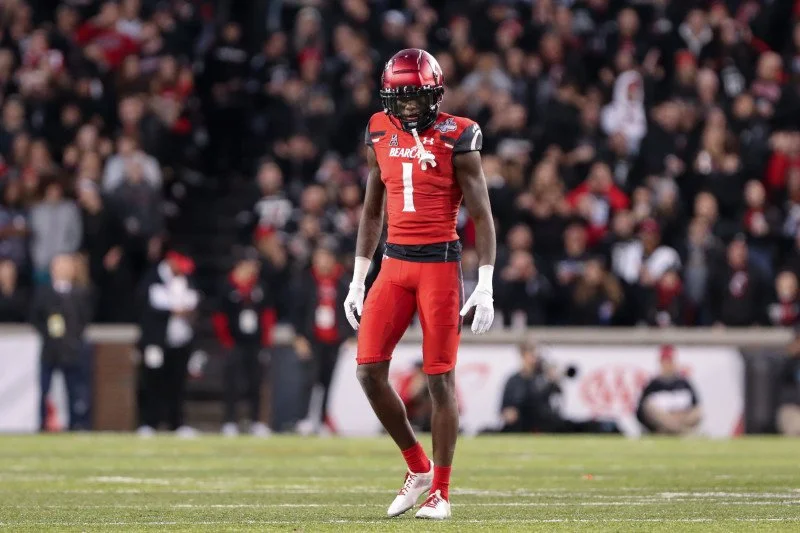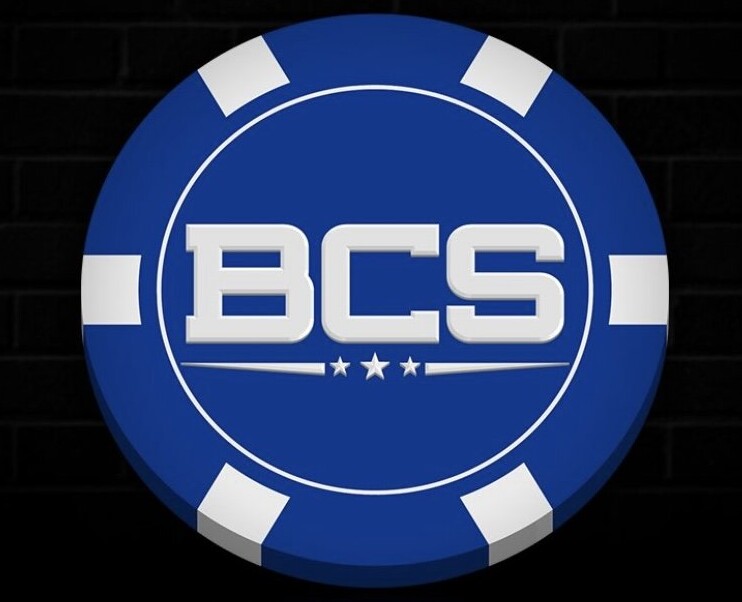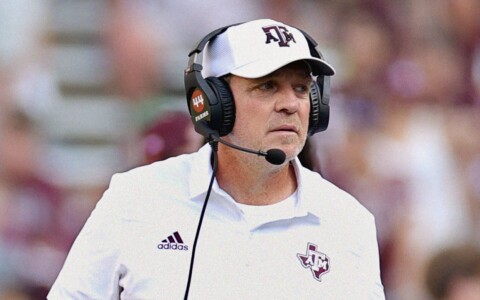
Ian Johnson/Icon Sportswire via Getty Images
In today’s NFL, teams are 4 or 5 deep at wide receiver, meaning that corner is becoming more and more important in the league. You need to have the bodies to match up with the passing attacks of the modern age. We’ve seen back-to-back years of historically deep drafts at wideout while the corners have lagged behind. This year, I think that the corners are catching up and are at very least on par with the wideouts in terms of depth. Let’s get going
First Round Grades:
1. Ahmad “Sauce” Gardner, Cincinnati Red Flags: None Player Comp: Richard Sherman
Ideal Role: Outside corner in a zone coverage scheme
If you’re a longtime listener to The Big Shots NFL Draft Podcast, you’d know that Devin Jackson and I have been huge on Gardner since he was a true freshman and he’s only gotten better since. He’s got the length, athleticism, and range that makes talent evaluators drool. In three seasons he never allowed a touchdown and more or less locked down his entire side of the field. I think he’s scheme diverse, so man or zone coverage schemes aren’t going to make or break him because he can play at a high level in both. He’s a rare talent who during his college career flew under the radar because of what school he played for. Thankfully in the draft cycle, we don’t scout the helmet.
2. Derek Stingley Jr., LSU Red Flags: Injuries (extensive time missed in 2020 and 2021) Player Comp: DeAngelo Hall/ Stephon Gilmore
Ideal Role: Press-Man corner
If Derek Stingley was able to stay healthy, you could argue that he’s the best player in this class. Unfortunately, he missed most of 2020 with injuries and then suffered a Lisfranc injury in 2021. When he’s been on the field, he’s shown the potential to be a top 5 corner in the league one day, but in a league where your best ability is availability, Stingley’s injury history makes me hesitant about him holding up at the next level- simply put, hurt guys stay hurt. The ability is there to be a dominant man-to-man corner because of his ball skills, length and athleticism though.
3. Andrew Booth Jr., Clemson Red Flags: None Player Comp: 90% Jaire Alexander
Ideal Role: Man-to-man boundary corner
Booth has made his living in college as a sticky corner in man coverage with a knack for making some highlight-reel plays on the football (see Virginia 2020). He’s able to play at a high level in zone coverage as well, so his value in round one is evident (scheme diverse corners are always valuable). What sets Booth apart from a lot of college corners is his willingness and ability in tackling. He’s always ready to stick his body in the way and make a tackle, often doing so with solid technique and form. I’m not sure there’s any glaring weakness in his game, which is always a good sign with corners.
Second Round Grades
4. Trent McDuffie, Washington Red Flags: Size limitations Player Comp: Byron Murphy
Ideal Role: Slot corner
Trent McDuffie has all the ability to be an outside corner, however, his size limitations are bound to kick him inside to playing a slot role. At 5’11 193 with 29-inch arms (5th percentile), NFL teams aren’t going to think he has the length to be effective outside. That being said, he can be an elite slot corner because of his ball skills, tenacity and ability to defend in the run game.
5. Kaiir Elam, Florida Red Flags: None Player Comp: None
Ideal Role: Starting outside corner, scheme diverse
Elam’s at his best when he’s playing in man coverage, but he can do well in zone as well. A. multi-year starter with NFL bloodlines, Elam has what it takes to stick in the NFL for a considerable time, and should be a starter early, with the potential to be an impact starter before his rookie contract expires. He could go in round one and I wouldn’t bat an eye at it.
6. Roger McCreary, Auburn Red Flags: Size Limitations Player Comp: Elijah Molden
Ideal Role: Slot Corner
Take everything I just said about McDuffie, and it still works for McCreary. McCreary’s arms are even shorter at 28 7/8 inches (the 0th percentile), but, like McDuffie, he could be a good outside corner if he had longer arms.
7. `Kyler Gordon, Washington Red Flags: None Player comp: None
Ideal Role: Inside/outside corner
Third Round Grades
8. Martin Emerson, Mississippi St. Red Flags: None Player Comp: None
Ideal Role: Cover-3 Boundary corner
9. Coby Bryant, Cincinnati Red Flags: None Player Comp: None Ideal Role: CB2 in a zone scheme
10. Mykael Wright, Oregon Red Flags: None Player Comp: None
Ideal Role: Slot
11. Tariq Woolen, UTSA Red Flags: None Player Comp: Ifeatu Melifonwu
Ideal Role: Developmental corner
Fourth Round Grades
12. Cam Taylor-Britt, Nebraska Red Flags: Position? Player Comp: None Ideal Role: Versatile DB in a zone scheme
13. Montaric Brown, Arkansas Red Flags: None Player Comp: None
Ideal Role: Boundary Corner in zone scheme with the freedom to ballhawk
14. Mario Goodrich, Clemson Red Flags: None Player Comp: None
Ideal Role: Developmental outside corner
15. Alontae Taylor, Tennessee Red Flags: None Player Comp: Shaquil Griffin
Ideal Role: Developmental Starter
16. Akayleb Evans, Missouri Red Flags:None Player Comp: None
Ideal Role: Developmental perimeter corner
17. Jalyn Armour-Davis, Alabama Red Flags: none Player Comp: None
Ideal Role: Developmental corner
Fifth Round Grades
18. Kalon Barnes, Baylor Red Flags: None Player Comp: None Ideal Role: Deep zone specialist
19. Derion Kendrick Red Flags: Dismissed from Clemson in 2021 Player Comp: Kelvin Joseph
Ideal Role: Developmental corner or transition to safety
20. Josh Jobe, Alabama Red Flags: 24 years old on draft day Player Comp: None
Ideal Role: depth corner
Seventh Round Grades
21. Allie Green IV, Missouri Red Flags: turns 24 in rookie season Player Comp: None
Ideal Role: depth outside corner
22. Tariq Castro-Fields, Penn St. Red Flags: None Player Comp: None
Ideal Role: Depth

